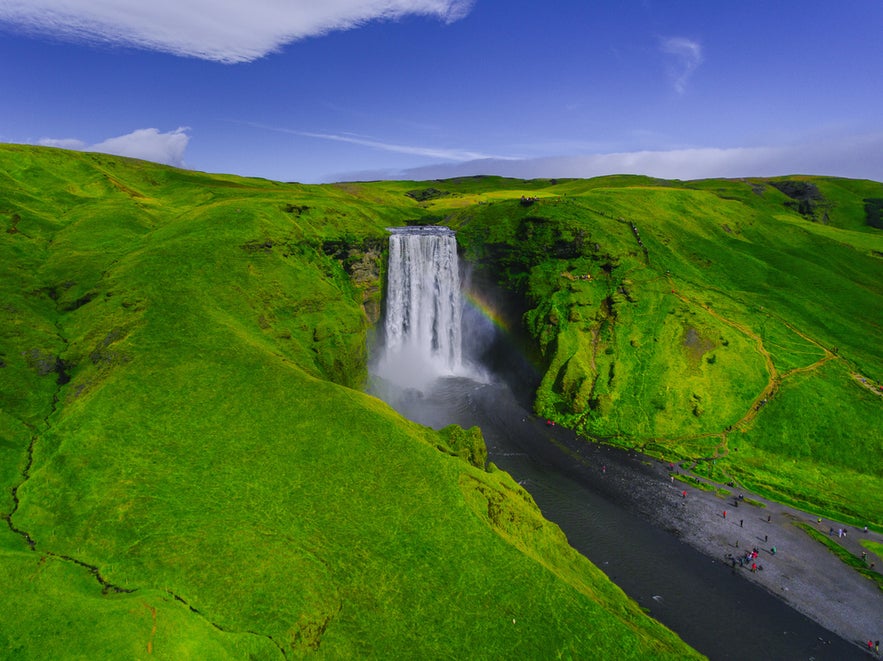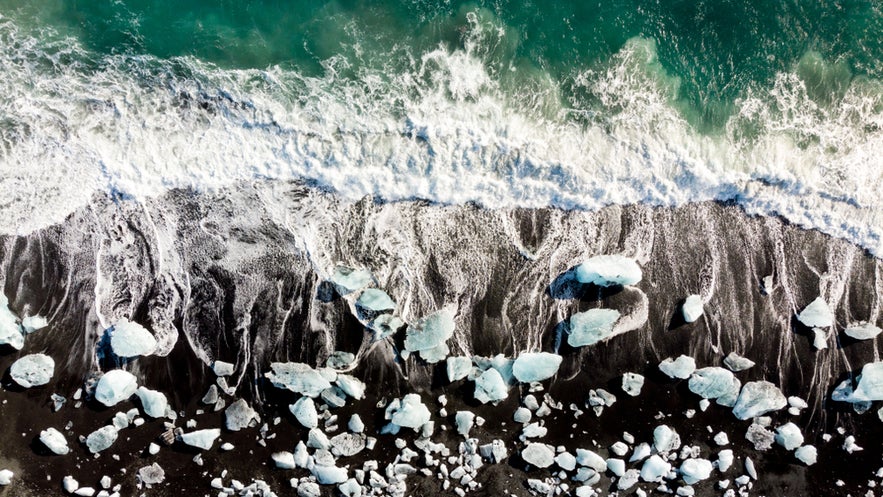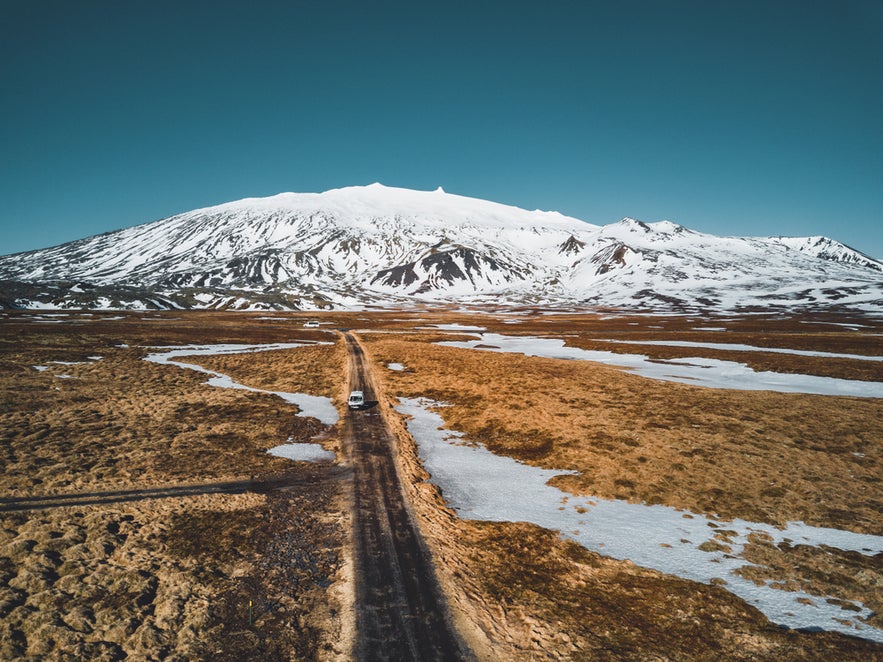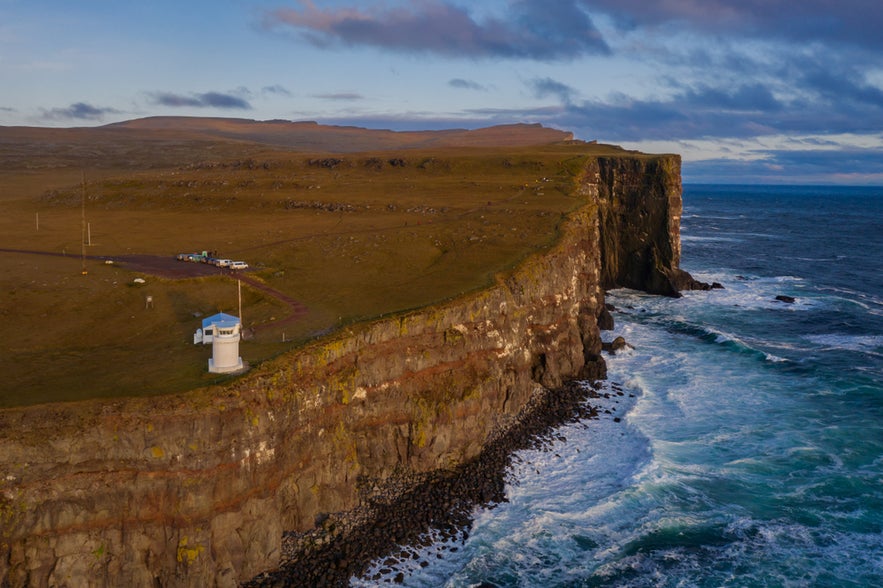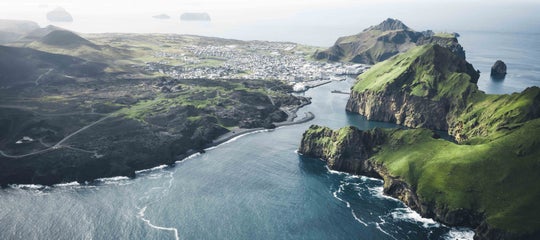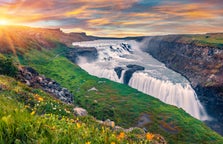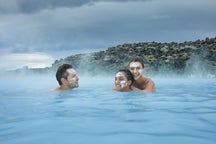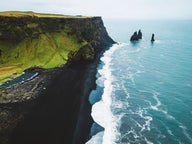
Iceland follows the European Union Aviation Safety Agency (EASA) framework, which organizes drone operations by risk level and weight. Understanding these rules is important before planning where and how to fly your drone.
Since many of Iceland’s most scenic locations are in remote areas, travelers often look for the best ways to reach them. Joining photography tours is a great option for capturing Iceland’s landscapes with expert guidance, and some tours also visit areas where drone flying is allowed.
Why You Can Trust Our Content
Guide to Iceland is the most trusted travel platform in Iceland, helping millions of visitors each year. All our content is written and reviewed by local experts who are deeply familiar with Iceland. You can count on us for accurate, up-to-date, and trustworthy travel advice.
For more flexibility, self-drive tours are another popular choice. Using car rentals in Iceland makes it easier to explore at your own pace, helping you reach scenic viewpoints, open landscapes, and less crowded spots that are suitable for drone photography.
Read further to explore essential tips and rules for safe and enjoyable drone use in Iceland.
Key Takeaways
-
Flying a drone in Iceland is legal, but you must follow regulations set by the Icelandic Transport Authority (ICETRA).
-
Drone registration is required for most operators and costs 5,500 ISK (about 40 USD) through Iceland's official drone registration portal.
-
National parks and many protected areas have strict drone restrictions, so always check the latest rules before flying.
-
Maximum altitude is limited to 394 feet (120 meters), and you must maintain safe distances from people, buildings, and restricted locations.
-
Drone regulations in Iceland can change, so always confirm the latest rules on the Icelandic Transport Authority’s website.
- See also: Photography in Iceland
- Read Best Itineraries for Photography Lovers in Iceland for more information
Drone Laws in Iceland (2025 Update)
 Iceland follows the drone regulations set by the EASA, which standardizes drone laws across participating countries. These rules make it easier for both locals and visitors to understand how and where drones can be flown safely while protecting Iceland’s natural beauty and wildlife.
Iceland follows the drone regulations set by the EASA, which standardizes drone laws across participating countries. These rules make it easier for both locals and visitors to understand how and where drones can be flown safely while protecting Iceland’s natural beauty and wildlife.
By registering your drone and following these guidelines, you can enjoy flying legally while capturing Iceland’s incredible landscapes.
Drone Registration and Pilot Competency in Iceland
 Before flying your drone in Iceland, you need to understand the rules, identify your drone’s classification, and register as an operator. The guide below walks you through the process step by step so you can prepare properly before your flight.
Before flying your drone in Iceland, you need to understand the rules, identify your drone’s classification, and register as an operator. The guide below walks you through the process step by step so you can prepare properly before your flight.
1. Understand Operational Categories
In Iceland, drone flights are grouped into three main categories. These categories define where you can fly, how close you can get to people, and whether you need special permits.
Open Category (most relevant for tourists)
-
This is for low-risk flights with drones weighing up to 25 pounds (11 kilograms).
-
You must keep the drone within your visual line of sight.
-
Maximum altitude: 394 feet (120 meters).
-
Includes three subcategories:
-
A1: Flying over people is allowed but not directly above crowds.
-
A2: Flying closer to people is allowed but requires maintaining a safe distance.
-
A3: Flying far from people is required, staying at least 492 feet (150 meters) away from residential, commercial, and industrial areas.
-
Specific Category
-
This is for medium-risk flights not covered under the Open Category.
-
Requires special authorization and a risk assessment.
-
Usually applies to professional or commercial flights.
Certified Category
-
This is for high-risk flights, including drones carrying passengers or heavy cargo.
-
Requires certification for both the drone and the operator.
-
Typically relevant for industrial operations, not recreational pilots.
2. Know Your Drone’s Class (C0 to C6)
Under EASA regulations, drones are classified into six groups. Your drone’s class helps define where you can fly and whether you need to take an exam. Here's a quick overview of the different drone classes:
3. Register as a Drone Operator
Once you know your drone’s class and operational category, you need to register at Iceland's official drone registration portal before your flight. Registration is mandatory for all drone operators and costs 5,500 ISK (about 40 USD).
The registration is valid for five years, and under the EASA framework, it’s recognized across all EASA member countries. This means if you register in Iceland in 2025 and visit another EASA country like Switzerland in 2028, you won’t need to register again.
After completing registration, you will receive a unique operator ID that must be attached to your drone.
4. Complete the Required Exam
Since most travelers fall under the Open Category, you’ll likely need to take an online exam before flying your drone in Iceland. Depending on your operational category, you may need to take an online or in-person exam. Here are the exams required for each category:
-
A1 and A3: A free online exam is available at Iceland's official drone registration portal.
-
A2: Requires an in-person theoretical exam at the Icelandic Transport Authority or an approved test center. Self-practical training must be completed before taking the exam.
5. Prepare Before Flying
Before your flight, make sure your drone is fully ready to operate safely. Here are a few things to keep in mind:
-
Label your drone by attaching your operator ID clearly.
-
Consider liability insurance. While optional, it is highly recommended to cover potential accidents or property damage.
-
Check that your firmware is updated, batteries are stored safely, and propellers are secured before your flight.
Key Drone Flight Rules in Iceland
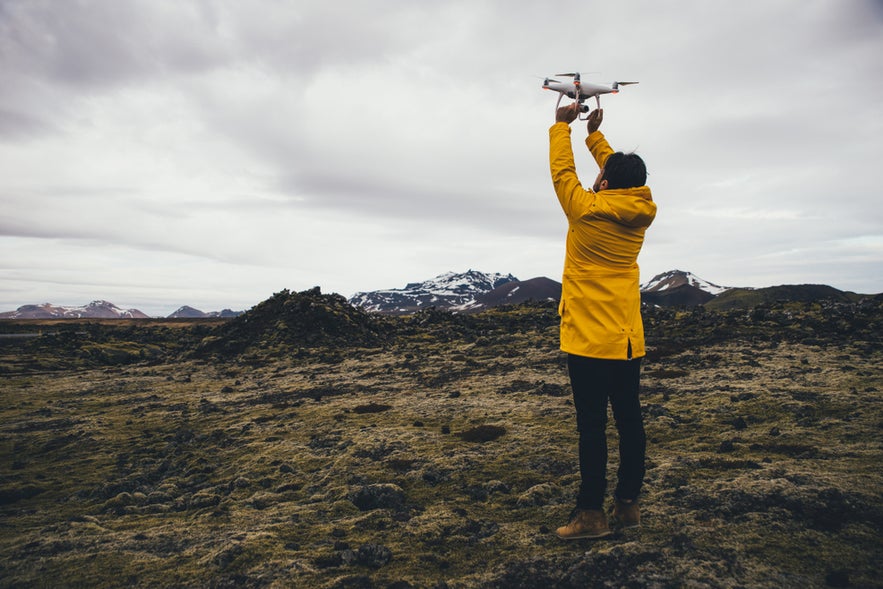 In 2025, Iceland fully aligned its drone regulations with the latest EASA framework under Regulation No. 1360/2024. These updates introduced clearer rules for both hobbyists and professional pilots to make drone flying safer and more consistent across Europe. Here are the key drone flight rules in Iceland that you should follow:
In 2025, Iceland fully aligned its drone regulations with the latest EASA framework under Regulation No. 1360/2024. These updates introduced clearer rules for both hobbyists and professional pilots to make drone flying safer and more consistent across Europe. Here are the key drone flight rules in Iceland that you should follow:
-
Maximum altitude: Fly no higher than 394 feet (120 meters) above ground level.
-
Weight limit: Your drone must weigh under 55 pounds (25 kilograms).
-
Visual line of sight (VLOS): Keep your drone where you can always see it.
-
Crowds and gatherings: Do not fly directly above groups of people or assemblies.
-
Distance from airports:
-
Stay at least 1.24 miles (2 kilometers) away from commercial airports.
-
Stay 0.93 miles (1.5 kilometers) away from smaller airfields.
-
-
Reykjavik restrictions: Due to the proximity of Reykjavik Domestic Airport, avoid flying above buildings in central Reykjavik.
-
Urban weight limit: In urban areas, drones must weigh under 6.6 pounds (3 kilograms) unless special permission is granted.
-
Distance from buildings: Maintain at least 164 feet (50 meters) from private buildings and 492 feet (150 meters) from public buildings unless the owner grants permission.
-
Sensitive locations: Do not fly over or near government facilities, hospitals, power plants, state institutes, or military zones.
-
National parks & popular attractions: Many are restricted zones requiring special permits.
-
Night flying: Allowed only if your drone has proper anti-collision lighting. Without lights, fly only during daylight.
-
Weather conditions: Avoid flying in strong winds, heavy rain, snow, or fog. Always check conditions first.
-
Dropping objects & dangerous goods: Releasing objects from drones or carrying hazardous materials is prohibited.
-
Operator ID labeling: Your registration number must be visible on your drone.
-
Always check the official drone map: Use the Iceland drone map before flying to confirm legal zones.
Important: Drone laws and restrictions in Iceland can change. Always check the latest updates on the Icelandic Transport Authority’s drone page.
No-Fly Zones and the Official Drone Map in Iceland
 Before flying your drone in Iceland, it’s important to know where drones are not allowed or require special permission. Iceland protects its wildlife, cultural landmarks, and natural environments, so many locations have strict regulations.
Before flying your drone in Iceland, it’s important to know where drones are not allowed or require special permission. Iceland protects its wildlife, cultural landmarks, and natural environments, so many locations have strict regulations.
The official Iceland Drone Map is the best resource to check restricted areas. Always review it before every flight, since rules and zones can change depending on weather, seasonal closures, and local permits.
Where Drones Are Restricted in Iceland
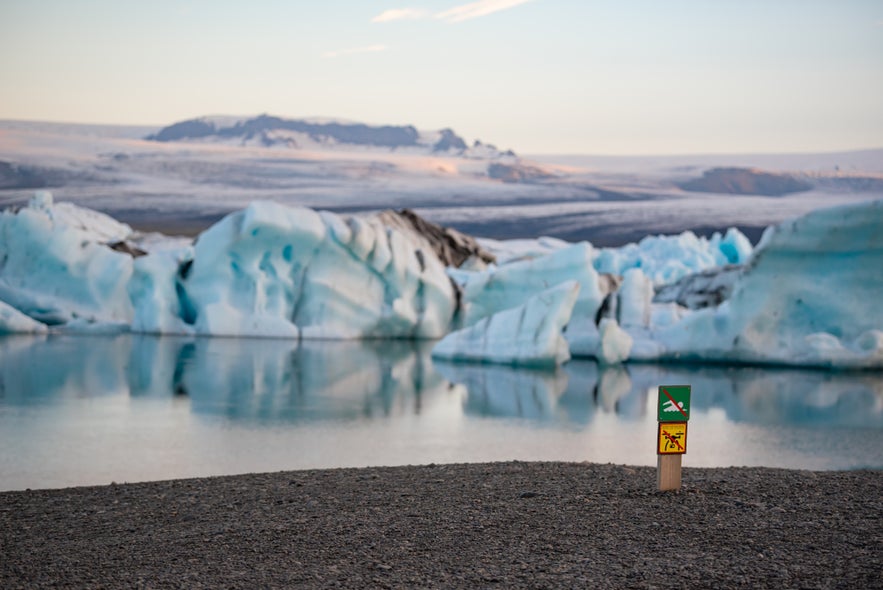 Here are the main areas where drones are banned or require special permits:
Here are the main areas where drones are banned or require special permits:
-
National parks: Drone use in Iceland’s national parks (Vatnajokull, Snaefellsjokull, and Thingvellir) is regulated. Thingvellir and Vatnajokull have their own rules, while Snaefellsjokull bans drones from April 15 to September 15 without a permit from the Environment Agency of Iceland.
-
Nature reserves and wildlife areas: Certain zones have seasonal drone restrictions, especially during bird nesting periods, to protect wildlife and sensitive habitats.
-
Popular attractions: Due to high visitor numbers, certain waterfalls, lagoons, and beaches have drone bans to protect privacy and safety.
-
Urban centers: Reykjavik and other towns may have weight and distance limits due to proximity to airports and private properties.
-
Critical infrastructure: Drones are not allowed near hospitals, power plants, government facilities, and military zones.
-
Airports and heliports: Maintain at least 1.24 miles (2 kilometers) from commercial airports and 0.93 miles (1.5 kilometers) from smaller airfields.
Drone Access at Popular Natural Attractions in Iceland
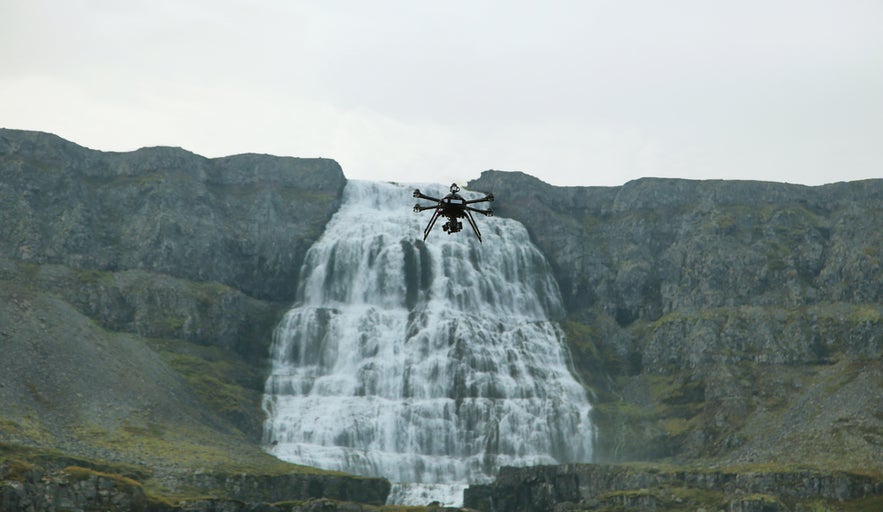 Some of Iceland’s most famous natural landmarks and attractions have strict drone rules due to safety, privacy, and wildlife protection concerns. The list below shows where drones are allowed, where permits are required, and which places are completely off-limits.
Some of Iceland’s most famous natural landmarks and attractions have strict drone rules due to safety, privacy, and wildlife protection concerns. The list below shows where drones are allowed, where permits are required, and which places are completely off-limits.
Many locations also have seasonal restrictions or time-limited flight windows, especially during bird nesting season. Always check on-site signs and confirm the latest drone rules with the Environment Agency of Iceland or local park authorities before flying.
Golden Circle Region
-
Gullfoss Waterfall: One of Iceland’s most iconic waterfalls. Recreational drones are allowed from April 1 to October 31 between 8:00 AM and 10:00 AM, and from November 1 to March 31 between 11:00 AM and 12:00 PM. Outside these times or for commercial use, a permit is required.
-
Thingvellir National Park: A UNESCO World Heritage Site where the Eurasian and North American tectonic plates meet. Recreational drones are allowed before 9:00 AM or after 6:00 PM in the most-visited areas. Commercial filming requires park approval.
-
Geysir Geothermal Area: Famous for its erupting Strokkur Geyser. Drones are allowed from April 1 to October 31 between 8:00 AM and 10:00 AM, and from November 1 to March 31 between 11:00 AM and 12:00 PM without a permit. Outside these times or for commercial use, a permit is required. Flying lower than 164 feet (50 meters) over Strokkur is prohibited.
South Coast
-
Skogafoss Waterfall: A 197-foot (60-meter) waterfall popular for close-up photography. Same drone rules as Gullfoss, but flying in the canyon in front of the waterfall is forbidden.
-
Dyrholaey Peninsula: One of Iceland's famous puffin-watching sites with stunning cliffs. Drone use is prohibited from May 1 to August 15, and permits are not granted during this period due to bird nesting. Outside these dates, a permit is required.
Southeast Iceland
-
Jokulsarlon Glacier Lagoon: A glacial lake filled with floating icebergs. Drones are not allowed from April 15 to July 15 for bird protection. Outside this period, they are allowed only during specific time windows, and permits are required for commercial use or restricted zones.
-
Diamond Beach: Located across from Jokulsarlon, where icebergs wash ashore on black sand. Follows the same drone rules as Jokulsarlon.
-
Vatnajokull National Park: Iceland’s largest national park, home to glaciers, waterfalls, and volcanoes. Recreational drones are generally allowed, but strict regional rules apply. Some areas, such as Skaftafell, Jokulsargljufur, and Askja, are completely prohibited. Permits are required for commercial use.
Reykjanes Peninsula
-
Blue Lagoon: Iceland’s world-famous geothermal spa. Drones are banned for visitors. Commercial filming requires prior written approval, a paid permit, and compliance with strict filming terms.
Snaefellsnes Peninsula
-
Snaefellsjokull National Park: Known for its glacier-capped volcano and coastal cliffs. Drones are not allowed from April 15 to September 15 without a permit. Even with a permit, flying near bird cliffs and sensitive nesting areas is prohibited. Outside this period, check for local restrictions.
Westfjords
-
Dynjandi Waterfall: A spectacular cascading waterfall and one of the most visited sites in the Westfjords. Drones are banned from May 1 to September 15 without a permit. From September 16 to April 30, drones are allowed without a permit. No exemptions are granted for flights on the seaside of Dynjandisvegur Main Road.
-
Hornstrandir Nature Reserve: A highly protected wilderness known for its rich wildlife. Drone use is prohibited from May 1 to August 15, and permits are not granted near bird cliffs or other sensitive nesting areas during this period. Outside these dates, a permit is required.
-
Latrabjarg Cliffs: A famous puffin-watching site and one of Europe’s largest bird cliffs. Drone use is prohibited from May 1 to August 15, and permits are not granted during this period due to bird nesting. Outside these dates, a permit is required.
North Iceland
-
Dettifoss Waterfall: One of Europe’s most powerful waterfalls, located in Vatnajokull National Park. Drone use is only permitted during specific time windows that vary by season. Recreational drones are allowed only on the west side of the river and are limited to the canyon area. You cannot fly north of the northernmost viewing platform. The east side requires a permit, and flying over crowds is prohibited.
-
Myvatn: A stunning volcanic area surrounded by rich birdlife and unique landscapes. Drone use here is restricted as the area is a protected bird sanctuary. Whether you need a permit depends on the time of year and the type of flight, with stricter rules during nesting periods when disturbance to wildlife is more likely.
No-fly zones and permit requirements can change based on weather, seasonal closures, and conservation updates. Always confirm the latest details on the official Iceland Drone Map before flying.
Drone Permits and Exemptions in Iceland
 Many of Iceland’s most popular attractions, national parks, and nature reserves have drone restrictions to protect wildlife, cultural heritage, and visitor safety. In some cases, you can still fly your drone if you apply for a special permit in advance.
Many of Iceland’s most popular attractions, national parks, and nature reserves have drone restrictions to protect wildlife, cultural heritage, and visitor safety. In some cases, you can still fly your drone if you apply for a special permit in advance.
When You Need a Drone Permit in Iceland
You’ll need a permit if you plan to:
-
Fly inside national parks: In Vatnajokull and Snaefellsjokull, permits are often required due to strict seasonal restrictions and sensitive protected zones. In Thingvellir, recreational drones are allowed only during specific time windows, but a permit is required for commercial filming.
-
Film in protected nature reserves: Necessary in areas managed by the Environment Agency of Iceland with wildlife-sensitive environments, including Hornstrandir, Latrabjarg Cliffs, Dyrholaey Peninsula, and certain bird cliffs inside national parks.
-
Fly at restricted attractions: Some high-traffic or ecologically sensitive sites require permits or have seasonal bans, including Jokulsarlon Glacier Lagoon, Diamond Beach, Dettifoss east side, Skaftafell zones, and areas near bird cliffs.
-
Operate a drone for commercial purposes: Always required for filming, photography, research, or advertising, regardless of location. Popular sites like Blue Lagoon, Thingvellir, and Snaefellsjokull require prior written approval.
How To Apply for a Drone Permit in Iceland
Follow these steps to apply for a permit from the Environment Agency of Iceland:
1. Prepare your documents
Before submitting your application, make sure you have:
-
A detailed project description, including purpose and scope
-
A map of your planned flight area
-
An assessment of potential impact on wildlife and the environment
-
Equipment details and drone specifications
2. Submit your application
Send your application through the official Environment Agency drone flying application portal. For questions about protected areas, you can also contact natura@nattura.is.
Note: Thingvellir National Park and Vatnajokull National Park have their own rules for drone flying. Check the official drone guidelines for Thingvellir National Park and the drone use regulations for Vatnajokull National Park.
3. Pay the processing fee
-
41,600 ISK (about 295 USD) for permits covering up to two protected locations
-
83,200 ISK (about 590 USD) for permits covering three or more locations or for cinematography and large-scale commercial projects
4. Wait for approval
Standard processing time is about 15 days. For the Myvatn Area, allow up to 30 days. It is best to apply at least three weeks before your planned flight to avoid delays.
Important: Permit rules, fees, and processing times can change. Always check the latest details on the Environment Agency of Iceland’s website before applying.
Tips To Increase Your Chances of Approval
-
Apply early: Especially during summer when demand is high.
-
Be specific: Clearly describe your filming plans and locations.
-
Avoid peak hours: Requests for early morning or off-season flights are more likely to be approved.
-
Show safety awareness: Include details on how you’ll avoid disturbing wildlife and other visitors.
-
Double-check restricted zones: Always confirm your locations using the Iceland Drone Map.
Exemptions From Standard Rules
In rare cases, you may need special authorization to go beyond Iceland’s normal drone flight limits. Authorizations are required for operations that fall outside the standard Open Category rules, such as:
-
Flying higher than the standard altitude: for example, above 394 feet (120 meters)
-
Flying beyond visual line of sight (BVLOS): when the drone travels farther than you can see
-
Flying closer to people, vehicles, or buildings: below the usual required safety distances
-
Conducting specialized operations: for example, scientific research or technical aerial surveys
These requests are reviewed on a case-by-case basis and usually require a detailed risk assessment and operational safety plan:
-
For flights in protected or restricted nature areas: Apply to the Environment Agency of Iceland (Umhverfisstofnun).
-
For flights that exceed normal operational limits (e.g., altitude, BVLOS, proximity to crowds) outside protected areas: Apply to the Icelandic Transport Authority (Samgongustofa).
Make sure to submit your request well in advance, as processing times and requirements may vary depending on the type of operation and location.
Traveling With a Drone in Iceland
 If you plan to bring your drone to Iceland, it’s important to prepare properly before your trip. Airlines have specific rules for carrying drones and batteries, and following them will help you avoid damage, delays, or confiscation at security.
If you plan to bring your drone to Iceland, it’s important to prepare properly before your trip. Airlines have specific rules for carrying drones and batteries, and following them will help you avoid damage, delays, or confiscation at security.
Bringing Your Drone on the Plane
You can bring your drone to Iceland, but it’s important to pack and prepare it properly to avoid problems during your journey. Most travelers choose to carry drones in their hand luggage to protect them from rough handling in checked baggage and to comply with airline battery policies.
Smaller drones like the DJI Mini 4 Pro and the DJI Mavic series are compact and easy to bring as cabin luggage. If you’re traveling with larger professional drones, such as the DJI Inspire, shipping them separately with insurance is often a safer option.
When packing drones for flights to Iceland, place them in a hard-shell or well-padded case to keep them safe from damage during transit. Always carry lithium batteries in your cabin bag, as most airlines restrict them from checked luggage due to safety regulations.
Battery Safety Tips
Drone batteries are treated as sensitive items by airlines and require careful handling. Here are the most important things to keep in mind when packing and transporting them:
-
Use LiPo-safe bags: Many airlines require LiPo battery bags to reduce fire risks during flights.
-
Know the capacity limits: Most airlines allow batteries under 100 watt-hours (Wh) without special approval. For larger batteries between 100 and 160 Wh, you usually need airline permission.
-
Secure battery terminals: Cover exposed connectors with tape or caps to prevent short circuits.
-
Check quantity limits: Many airlines limit passengers to two spare batteries over 100 Wh, but policies vary.
Packing Your Drone Safely
A drone is delicate equipment, so packing it properly is essential to protect it from damage during your journey. Follow these tips to keep your gear safe:
-
Use a hard-shell or padded case: A dedicated drone case provides better protection than regular bags.
-
Detach propellers before packing: Prevents bending or breaking while in transit.
-
Protect the camera and gimbal: Use lens caps, foam inserts, or gimbal locks to avoid scratches.
Where To Buy Drones and Accessories in Iceland
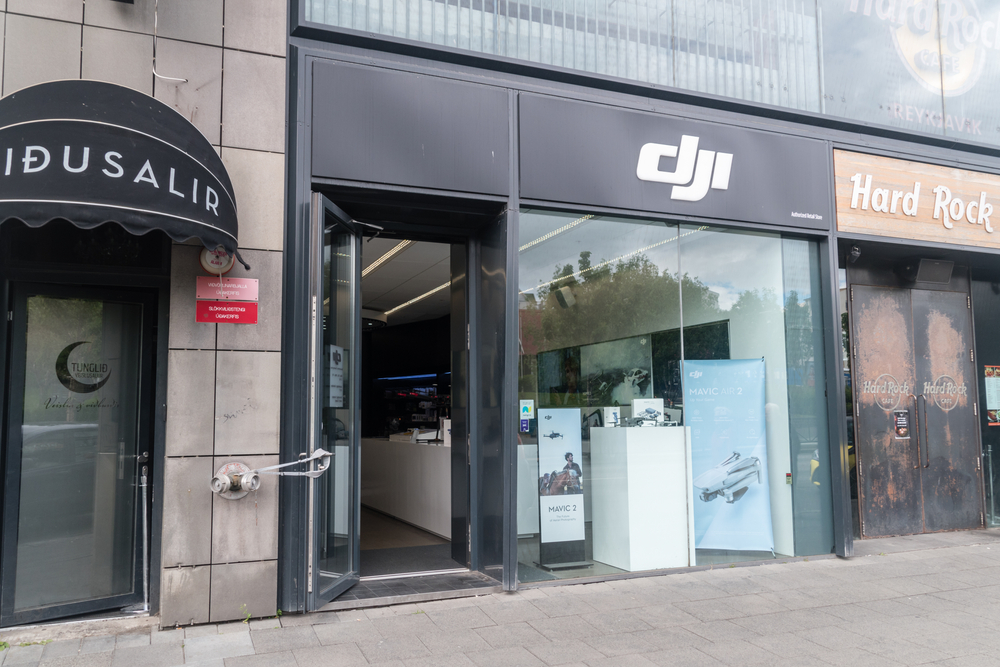 If you need to buy a drone, spare parts, or accessories during your trip, there are several reliable options in Reykjavik and online:
If you need to buy a drone, spare parts, or accessories during your trip, there are several reliable options in Reykjavik and online:
-
DJI Store Reykjavik: The official DJI store offers the latest drone models, batteries, propellers, and other accessories. It’s the best place for professional-grade gear and expert advice.
-
Dronefly: A local retailer specializing in drones and aerial photography equipment. They stock popular models and provide technical support and repairs.
-
ELKO: Iceland’s largest electronics retailer, with locations in Reykjavik and Keflavik International Airport. They carry consumer drones, batteries, and accessories.
-
Coolshop: Icelandic e-commerce sites, such as Coolshop, often stock drones and gear. Availability varies, so check ahead if you plan to order online.
FAQs About Flying Drones in Iceland
Before you start flying, it’s helpful to know the most common rules and restrictions. Here are quick answers to some frequently asked questions to make planning your drone flights in Iceland easier.
Can I fly a drone in Iceland?
Yes, flying a drone in Iceland is allowed, but you must follow the regulations set by the Icelandic Transport Authority. Rules include respecting altitude limits, avoiding restricted areas, and checking for permits where required.
Do I need a permit to fly a drone in Iceland?
In most open areas, you don’t need a permit, but special permission is required for flying in national parks, protected reserves, and certain popular attractions. Always check the Iceland Drone Map to confirm where permits apply.
Are drones allowed at the Blue Lagoon?
No, drones are not allowed at the Blue Lagoon due to safety concerns and visitor privacy. Special permission is required for any commercial filming in this area.
Can I fly my drone near Iceland’s waterfalls?
It depends on the location. At popular spots like Gullfoss, Seljalandsfoss, and Skogafoss, drone use is either banned or requires a permit. At less crowded waterfalls, you can usually fly legally if you follow Icelandic Transport Authority regulations and check the Iceland Drone Map beforehand.
What is the maximum drone flight altitude in Iceland?
You can fly up to 394 feet (120 meters) above ground level unless you have an approved exemption.
Can I bring my drone on the plane to Iceland?
Yes. You can bring your drone as carry-on or checked luggage, but batteries must always be packed in your hand luggage. Check your airline’s rules for size and quantity limits before flying.
Are drones allowed in Iceland’s national parks?
No, drones are banned in all national parks — including Vatnajokull, Snaefellsjokull, and Thingvellir — unless you obtain a special permit from the Environment Agency of Iceland.
How much does it cost to register a drone in Iceland?
Drone registration is required for most operators and costs 5,500 ISK (about 40 USD). You can register online at Iceland's official drone registration portal, and your registration will remain valid for five years.
Where can I find the official drone rules for Iceland?
The most reliable resources are:
-
Iceland Drone Map: shows legal and restricted zones
-
Icelandic Transport Authority: sets official drone regulations and manages operator registration in Iceland
Master the Art of Flying Drones in Iceland
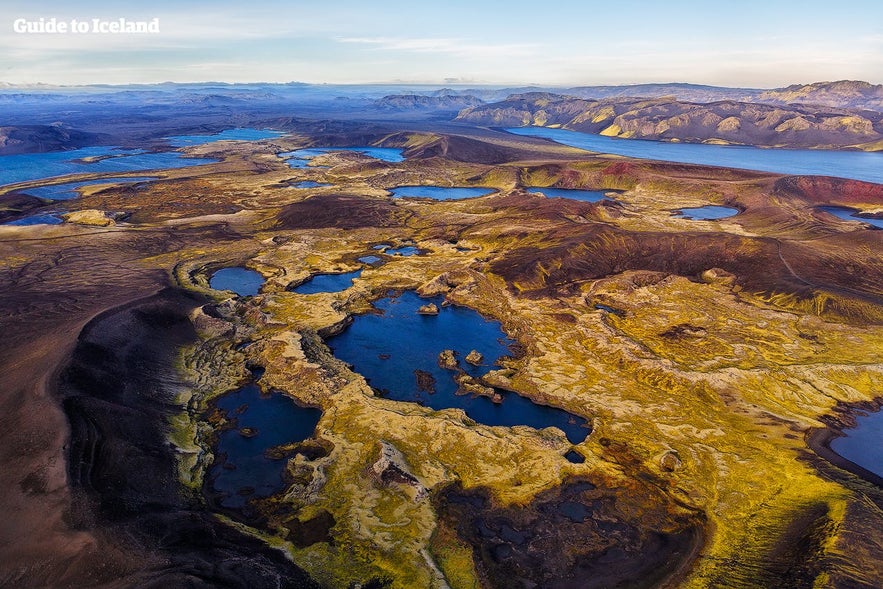
This guide covers everything needed to prepare for a smooth drone experience in Iceland, including the rules, permits, best locations, and tips for traveling with your equipment. With the right preparation, your drone can help you create lasting memories and spectacular footage of Iceland’s natural beauty.
Are you planning to bring your drone to Iceland? Which locations are you most excited to capture from the sky? Do you have tips or questions for other drone pilots? Share your thoughts and experiences in the comments below


